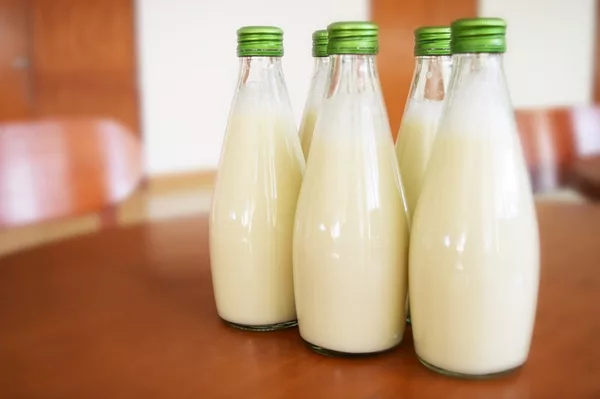FSMA and the Cold Chain: What You Need to Know about Temperature Monitoring

Food supply chains are increasingly becoming more complex. As regulatory demands, the threat of litigation, and criminal prosecutions increase, food businesses are becoming more accountable for how they operate their cold chains. Not only that, the consumer demand for fresher food is also increasing, resulting in even more food products that need to be kept fresh through every step of the supply chain. This means that end-to-end cold chain monitoring and temperature control to avoid spoilage and lengthen shelf life is more critical than ever.
As it is, roughly one-third of the food produced in the world for human consumption every year—approximately 1.3 billion tons—is wasted. Some say that foodborne illness may also be on the rise.[1] The U.S. Centers for Disease Control and Prevention estimates that 1 in 6 Americans (48 million) get sick, 128,000 are hospitalized, and 3,000 die from foodborne illnesses each year.[2] And according to the World Health Organization, roughly 420,000 people die due to consuming contaminated food worldwide each year.[3]
These are not trivial numbers. Controlling the temperature of fresh foods as it travels through the supply chain and moving from a reactive to a preventive method of responding to temperature deviations—for example, with real-time monitoring—play critical roles in decreasing those numbers.
The Complexity of the Food Supply Chain is Increasing
Supply chains are becoming more complex. Not only is most of the food we consume not produced locally, the rise of food traveling across country—and across the globe—gives rise to the need for diligent monitoring techniques. Food moves from the farm to a manufacturer or processor. Then it is transported to a distributor before finally making its way to a restaurant or retail store. Once it arrives at the grocer or restaurant, it still has to maintain some length of shelf life not only at that site, but also once it makes it into the home of the consumer.
Foods that require any kind of refrigeration—meats, fish, eggs, dairy, and fruits and vegetables—must be kept at cool temperatures through every step of that supply chain. To do this, it’s critical that businesses adopt a scalable temperature monitoring solution that provides 24/7, end-to-end visibility and control. Combining that with real-time monitoring and data adds an extra layer of empowerment to allow businesses to proactively prevent waste and improve food safety through each step of their supply chain.
The Importance of End-to-End Temperature Monitoring
When it comes to food recalls, 21 percent of U.S. Food and Drug Administration recalls and 25 percent of U.S. Department of Agriculture recalls occur due to bacterial contamination. Bacteria grow more rapidly between 40 °F and 140 °F, and can double in as little as 20 minutes.[4] If we know the temperature at which food has been stored from the beginning of its journey to our plates, it helps us answer the question “Is our food safe?”
We know as consumers not to eat a piece of meat that sat out on our kitchen counter at room temperature all day, but we have no way to know whether that piece of meat sat on a loading dock a little too long. Nor would we know if the truck container in which that food was transported was not kept at an optimal temperature. Businesses in the food industry—from farms, distributors, restaurants, and retailers—therefore have a corporate and social responsibility to ensure that their food products have been kept at the right temperature to keep consumers safe. The only way to know that is through end-to-end cold chain monitoring.
Looking for quick answers on food safety topics?
Try Ask FSM, our new smart AI search tool.
Ask FSM →
Moving from Reaction to Prevention with Real-Time Monitoring
The Food Safety Modernization Act (FSMA) is enforcing this corporate responsibility and ensuring that businesses shift from simply responding to food safety issues to actively preventing them. This results in greater consequences, including increased litigation and criminal prosecutions, for those who do not comply with the regulations. We’ve already seen businesses tarnish their brand reputation and go out of business in recent years due to food safety issues; in some cases, this has even resulted in jail time for their executives.
Real-time, end-to-end temperature monitoring plays a huge role in maintaining this corporate responsibility, as businesses move from reactive to preventative methods of dealing with problems as they occur in the supply chain.
A real-time monitoring solution can, for example, send alerts to relevant stakeholders at the moment a temperature deviation occurs, allowing supply chain and quality professionals to step in whenever there is an issue and either save the product before it’s too late or—if it is too late—make sure that it never reaches a consumer. This provides peace of mind that perishable food products that have travelled through the supply chain with no deviations are safe, at least from a temperature standpoint. Not only that, but historical data and prescriptive analytics enable businesses to avoid similar occurrences in the future, resulting not only in improved safety and less waste, but major cost savings.
Gisli Herjolfsson is the co-founder and CEO of Controlant.
About Controlant
Controlant offers cold chain management solutions as a subscription service to substantially improve quality consistency and drive sustainability for a wide range of clients in food, pharmaceutical, life sciences, and cold chain logistics sectors. Controlant's next-generation, cost-effective technology and services modernize the existing supply chain distribution and delivery system by significantly increasing efficiency through continuous condition monitoring and real-time prescriptive analytics, ensuring patient and consumer safety, and improving business performance while reducing cold chain waste, from manufacture through transport, storage, and last-mile distribution.
Controlant is headquartered in Reykjavik, Iceland, with subsidiaries in Denmark and the U.S., and powers businesses in more than 100 countries worldwide. To learn more, visit controlant.com.
References
1. https://edition.cnn.com/2018/07/20/health/food-safety-illness-rise-cdc/index.html.
2. https://www.cdc.gov/foodborneburden/2011-foodborne-estimates.html.
3. http://www.who.int/en/news-room/detail/03-12-2015-who-s-first-ever-global-estimates-of-foodborne-diseases-find-children-under-5-account-for-almost-one-third-of-deaths.
4. https://www.fsis.usda.gov/wps/portal/fsis/topics/food-safety-education/get-answers/food-safety-fact-sheets/safe-food-handling/how-temperatures-affect-food/ct_index.







